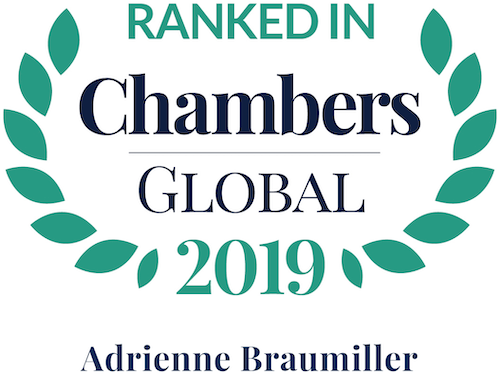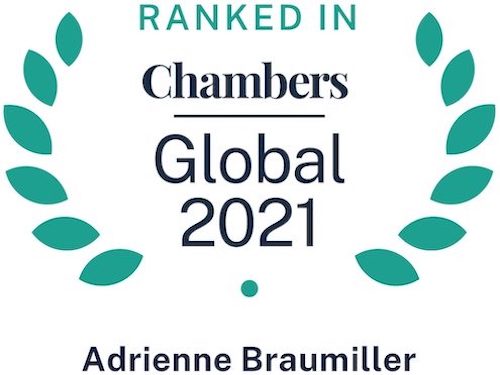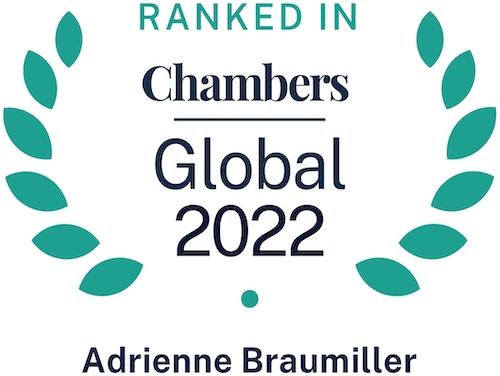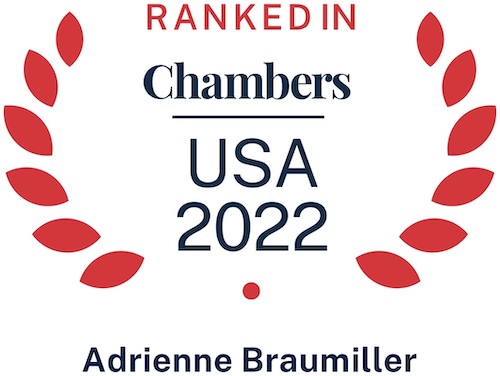Chaebols May Wabble but They Don’t Fall Down How Samsung Became 23% of South Korea’s GDP
By Bob Brewer, Braumiller Law Group
Chaebols are large, family-owned business conglomerates that play a significant role in South Korea’s economy. Some of the most well-known chaebols include Samsung Group, which is the largest chaebol, known for its electronics, semiconductors, and various other industries. SK Group: A major player in energy, chemicals, and telecommunications. Hyundai Motor Group: Famous for its automotive manufacturing, including Hyundai, Genesis, and Kia brands. LG Corporation: Involved in electronics, chemicals, and telecommunications. Lotte Corporation: Engaged in retail, tourism, and food industries. POSCO: One of the world’s largest steel manufacturers. Hanwha Group: Diversified into chemicals, defense, and financial services. GS Group: Active in energy, retail, and construction. Hyosung Group: Known for its textiles, chemicals, and industrial machinery, and Hanjin Group: Which operates in transportation and logistics, including Korean Air.
These conglomerates have a significant influence on the South Korean economy and are often involved in various government decisions. This rather close relationship has resulted in not just mutual support, but the government providing subsidies, loans, and tax incentives. When you look at where South Korea was economically in 1980, and where it is today (the 10th largest economy in the world) it does beg the question, who was leading the pack, as these top ten Chaebols in S. Korea account for as much as 65% of the GDP. The path to power in these family businesses is worthy of a Hollywood movie script, (there have been a few S. Korean dramas produced) and several books, but for the sake of brevity, let’s primarily focus on Samsung, the largest of the group.
Amazing, and true, in 2024 Samsung Group-affiliated companies contributed approximately 23% of South Korea’s GDP. That is a staggering percentage, as in comparison, the US behemoth, Walmart represented just 2.5% of the US GDP. Tracing the roots of the S. Korean monster is quite interesting. Samsung’s origins were very humble. Samsung was founded in South Korea on March 1, 1938, by Lee Byung-chul. Initially, it started as a small trading company, dealing in groceries and other goods. Over the decades, Samsung diversified into various industries, including textiles, insurance, food processing, and eventually electronics, which it is of course most famous for today. The Lee family, primarily through the Samsung Group, operates a vast network of 62 companies. Here are some of the most notable ones: Samsung Electronics: This is of course the flagship company of the Samsung Group and one of the largest electronics companies in the world. Most well-known in the US for its smartphones, (I love my new Samsung Galaxy S25 Ultra) semiconductors, and home appliances. Samsung Life Insurance: One of the largest life insurance companies in South Korea, providing a wide range of insurance products and services. Samsung C&T Corporation: This company is involved in construction, trading, and investment. It has played a significant role in building some of South Korea’s most iconic structures such as Jung-ho Tower, Lotte World Tower, and the Incheon International airport. Samsung Heavy Industries: One of the world’s largest shipbuilding companies, specializing in the construction of ships, offshore platforms, and related equipment. The shipbuilding in itself is impressive, as they construct the Ultra-Large Container Ships: SHI has built container ships with capacities exceeding 20,000 TEUs (Twenty-foot Equivalent Units). These ships are among the largest in the world, designed to transport massive amounts of cargo efficiently. LNG Carriers: SHI specializes in building Liquefied Natural Gas (LNG) carriers, which are crucial for transporting natural gas across the globe. These ships are also designed to handle the unique challenges of carrying LNG, including maintaining extremely low temperatures. Drillships and FPSOs: SHI also constructs advanced drillships and Floating Production Storage and Offloading (FPSO) units for the oil and gas industry. These vessels are equipped with state-of-the-art technology for offshore drilling and production. Samsung SDS: This company provides IT services, including consulting, system integration, and managed services. Overall, these companies are key contributors to the South Korean economy and are integral parts of the Samsung conglomerate. I also feel compelled to mention that Samsung owns an adventure park, Everland Resort, which is located in Yongin, Gyeonggi Province. Everland is of course the largest theme park in South Korea and includes a variety of attractions such as roller coasters, a zoo, and a water park called Caribbean Ba. 16,000 people visit the park daily @ $50 US for a day pass. For grins, in comparison, Disney World gets 160,00 peeps daily at anywhere from $119-$200 for a day pass. In light of the competitive edge, Samsung is currently working on ambitious expansion plans for the park which includes a new 300-hectare (approximately 741 acres) eco-adventure park as part of the Everland Resort Master Plan. This includes an expansion of the water park, a European village, Aesop’s village, and the T-Express, the largest wooden roller coaster in Asia. This coaster stands 183 feet tall and is also the longest, steepest and fastest coaster in Asia. You would have to knock me out and tie me to the seat to get me on it. If you are passionate about roller coasters and are thrill seeker, it’s up and running. Go for it.
In 2024, Samsung Electronics reported a total revenue of KRW 300.9 trillion (approximately $219.17 billion USD) This marked the second-highest annual revenue in the company’s history, despite some challenges in the market. These challenges were: Intensified Competition: Samsung experienced increased competition from Chinese manufacturers like Xiaomi, Oppo, and Huawei, particularly in the mid-range and budget smartphone categories. Additionally, Apple’s strong presence in the premium segment in key markets like the U.S. and Japan drew high-end customers away from Samsung. Labor Strikes: The National Samsung Electronics Union (NSEU) planned a strike in June 2024, which posed a potential disruption to Samsung’s operations, product launches, and its position in the global electronics market. This was a historic first for Samsung and highlighted salary concerns and demands for better working conditions. Semiconductor Market Conditions: Despite record revenue in the memory business, Samsung’s semiconductor division faced challenges due to increased R&D expenses, production costs, and lower utilization rates in the Foundry and S.LSI businesses. These factors impacted profitability and overall performance. Economic Conditions: Broader economic conditions, including shifts in consumer preferences and market saturation, made it difficult for Samsung to differentiate itself and maintain its market share.
Moving right along, overcoming market bumps in the road, this same electronics division employs over 260,000 people across more than 230 global bases in 76 countries. Samsung Electronics reported a total export value of approximately KRW 200 trillion (around $145.6 billion USD) FY 2024. This figure reflects the company’s strong performance in global markets, particularly in electronics and semiconductor products. In an even bigger picture, South Korea ranks as the 6th largest trading partner of the United States. In 2024, the total value of trade between the United States and South Korea was approximately $197.1 billion. This includes $65.5 billion in U.S. exports to South Korea and $131.5 billion in imports from South Korea. Total value in exports in 2024 between Samsung and the US is just under $46 billion. The significance in trade volume is remarkable when it comes to recognizing one particular company’s stature in trading with a country the size of the US.
However, it hasn’t been all wine (makgeolli), and roses (Mugunghwa) all paid for by fantastic compensation packages (Jae-Yong Lee, the Vice Chairman of Samsung, has been one of the highest-paid executives collecting a very comfortable US $260 million in 2024). As with most incredible success stories, Samsung’s rise to domination also comes with good, bad, and just plain ugly. The corruption within the Chaebol families in S. Korea has been well documented, and the punishment has never been commensurate with the severity of the offense according to the public. The fact is the incentives to prosecute these business moguls are far outweighed by the benefits of a soft release back into the private sector with a slap on the wrist and possibly some minimal community service, which would be covered monetarily. As blessed by the S. Korean government, when the economy is very dependent on one man, or woman’s, success, and/or failure, it doesn’t make sense to keep that key individual isolated, much less removed from orchestrating further economic development, regardless of who the victims are and at what cost. So, scandal, what scandal? Chaebols may wabble, but they don’t fall down. As a matter of fact, the Chaebols in S. Korea are still very strong even in the aftermath of the following scandals: Lee Kun-hee’s Bribery Scandal (2008): The chairman of Samsung was implicated in a bribery and tax evasion scandal. He was convicted but later pardoned. Lee Jae-yong’s Corruption Scandal (2017): The vice chairman and de facto leader of Samsung was involved in a corruption scandal linked to former President Park Geun-hye. He was convicted of bribery and embezzlement but was released on parole in 2021. Lotte Group: Family Feud and Corruption (2016): The founder’s family was embroiled in a bitter feud over control of the conglomerate, leading to investigations into corruption and embezzlement. Several family members were convicted. Hyundai Motor Group: Slush Fund Scandal (2006): The chairman, Chung Mong-koo, was convicted of embezzling company funds to create a slush fund for bribing officials. He received a suspended sentence. SK Group: Accounting Fraud (2003): The chairman, Chey Tae-won, was convicted of accounting fraud and embezzlement. He was sentenced to prison but later pardoned. Hanwha Group: Assault Scandal (2007): The chairman, Kim Seung-youn, was involved in a high-profile assault case where he was accused of ordering his bodyguards to beat up bar employees who had fought with his son. He received a suspended sentence. Although it is not necessarily a scandal, I must mention the Galaxy Note 7 Recall (2016): Samsung faced a major crisis when its Galaxy Note 7 smartphones were found to have battery defects that caused them to overheat and catch fire. The company had to recall millions of devices, which significantly impacted its reputation and finances. Labor Rights Violations: Samsung has faced allegations of labor violations, including forced labor, from various watchdog groups over the years. For instance, China Labor Watch has reported issues such as excessive overtime, poor working conditions, and the use of dispatch workers in some of Samsung’s supplier factories. A case of the pot calling the kettle black perhaps? In general, from a US perspective, CBP does not recognize S. Korea as an exporter of Forced Labor goods. On the flip side, historically speaking, South Korea has been significantly affected by forced labor issues, particularly related to events during World War II. Many Koreans were subjected to forced labor by Imperial Japan during the war. This has led to ongoing disputes and legal battles between South Korea and Japan regarding compensation and apologies for the victims. In recent years, the South Korean government and activists have continued to seek justice and compensation for the victims of forced labor. This issue remains a sensitive and complex aspect of South Korea-Japan relations but will soon fade with the aging population. And last on my corruption/lowlight list, but not least, is the “nut rage case” that involved Heather Cho (also known as Cho Hyun-ah), the daughter of Korean Air’s chairman, Cho Yang-ho. On December 5, 2014, while on a Korean Air flight from New York to Seoul, she became enraged when she was served macadamia nuts in a bag instead of on a plate in first class. (In a similar vein, my band had a contractual clause stating that we would absolutely not, under any circumstance, permit green M&M’s in the greenroom prior to a performance) Her outburst led to the plane returning to the gate to remove the chief flight attendant, causing a significant delay. Heather Cho was subsequently convicted of violating aviation law and served a prison sentence. This incident highlighted issues of power abuse within South Korea’s chaebols (and bad parenting) and sparked more widespread public outrage regarding their existence. A case of displaced aggression perhaps? Regardless, it was a cry (scream) for help for some much-needed anger management.
I digress, now, back to who is buying what Samsung exports globally? Semiconductors: In addition to Taiwan Semiconductor Manufacturing Company (TSMC) Samsung is also one of the world’s leading producers of memory chips, including DRAM and NAND flash memory, which are essential for a wide range of electronic devices. In 2024, the total value of semiconductor imports into China from South Korea was approximately $99.11 billion, making China the premier destination. Smartphones: Samsung’s Galaxy series, including flagship models like the Galaxy S and Galaxy Note, are among the most popular smartphones globally. (Again, I love my Samsung Galaxy S25 Ultra) In 2024, Samsung’s smartphone sales in the US saw a significant increase, particularly in the first quarter. Samsung’s market share rose to 31% in Q1 2024, up from 27% in Q1 2023, but ended FY 2024 at 23%. The growth was largely driven by the success of the Galaxy S24 series and the decline, of course, was due to the iPhone still dominating in the US with 60% market share in 2024. Samsung did, however, sell $18 billion in smartphones to the US in 2024, not to mention, but I will, the $20 billion they also sold to S. Koreans in the same year. Display Panels: Samsung produces high-quality OLED and LCD panels used in televisions, smartphones, and other devices, and generated $301 billion in revenue FY 2024. China, once again, is the biggest importer of Samsung’s display panels which was approximately $12.5 billion in 2024. Home Appliances: Samsung exports a variety of home appliances, including refrigerators, washing machines, and air conditioners, of which the US is the largest importer, marking $5.2 billion in FY 2024. Consumer Electronics: This category includes products like tablets, smartwatches, and audio devices, and generated $52 billion in revenue FY 2024 for the conglomerate. The US is the biggest importer at $18 billion in 2024.
Kudos to Samsung and the Lee family for being able to carve out such a huge slice of the pie in S. Korea’s GDP. Their nearest competitor LG was only able to achieve a paltry sum of $87 trillion yuan in revenue in 2024, as opposed to Samsung’s $300 trillion yuan. In view of the various degrees of separation, or actual bonds in this case, regarding the company’s historical landmarks, when you have preferential treatment via one’s government, there is much less of a path of resistance regarding mergers and acquisitions. Not so much in the US. Conglomerates are permitted to operate in the United States; however, they are subject to various regulations and oversight, particularly concerning antitrust laws. The Department of Justice (DOJ) and the Federal Trade Commission (FTC) enforce these laws to prevent monopolistic practices and ensure fair competition. For example, the 2023 Merger Guidelines outline the factors and frameworks used by these agencies when reviewing mergers and acquisitions to prevent anti-competitive behavior. These guidelines help maintain a competitive market environment, even for large conglomerates.
The sheer size of Samsung’s organization and the assumption of the mantra of the proverbial nose to the grindstone hasn’t tarnished Samsung’s reputation or deterred it in any way from acquiring new talent. Samsung receives over 100,000 applications from graduates annually. They conduct recruitment drives twice a year, in March and September. Samsung’s hiring process includes document screening, the Global Samsung Aptitude Test (GSAT), comprehensive interviews, and a medical check. They seek passionate, driven, and creative individuals for various roles across their affiliates, and with 62 total, and counting, there is always room for more. In closing, I must confess that I was one who assumed the work environment at Samsung (Simply because it is in S. Korea, land of the 9-9-6) is reminiscent of the grade school nun from hell who would beat your knuckles into submission with a ruler daily to keep you in line and focused on the mission, her mission, from God. Not so, get this: Samsung’s work environment is known for several key characteristics: Innovation-Centered Culture: Samsung places a strong emphasis on technological innovation. Employees are encouraged to develop their skills and contribute to the company’s mission of creating superior products that improve life and society. Commitment to Employee Well-being: Samsung prioritizes the health and safety of its employees. They adhere to strict laws and regulations and even set higher standards through their Code of Conduct. This includes providing appropriate wages, benefits, and ensuring safe working conditions. Work-Life Balance: Samsung offers flexible working hours and allows employees to plan their annual leave. They introduced a system where employees do not have to work on Fridays during the paycheck week, promoting a “work-smart”, and let’s head to Happy Hour environment. Love it! Reminds me of Tokyo proposing a 4-day work week this April 2025. Continuous Development: Samsung supports continuous development both in and outside of work. They provide opportunities for employees to grow their careers and enhance their skills. Now, you might assume that Samsung’s HR department wrote this praise. Well, I checked and there is a platform in S. Korea similar to Glass Door in the US called Jobplanet. Jobplanet, like Glass Door, allows users to review companies anonymously, providing information on company pros and cons, ratings, salary data, and interview experiences. It covers more than 50% of registered companies in South Korea inclusive of Samsung. On Jobplanet, Samsung generally receives positive reviews from employees. The company is praised for its innovative work environment, competitive salaries, and comprehensive benefits. However, some employees mention challenges such as long working hours and high-pressure situations, (Again, the 9-9-6 culture comes to mind) but overall, Samsung is considered a desirable place to work, especially for those interested in technology and innovation. Getting hired by Samsung, where welcome to the family signifies quite an accomplishment. BTW, did I mention that I love my new Samsung Galaxy S25 Ultra?
Read more articles by this author: https://www.braumillerlaw.com/author/bob/

























